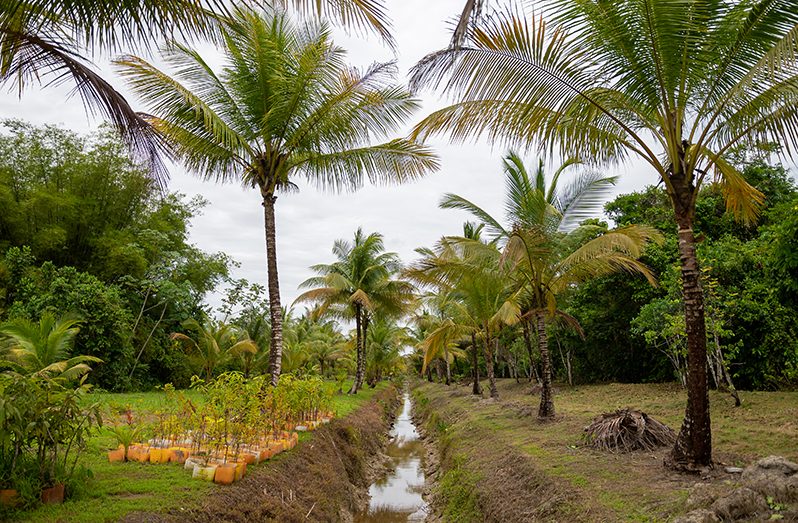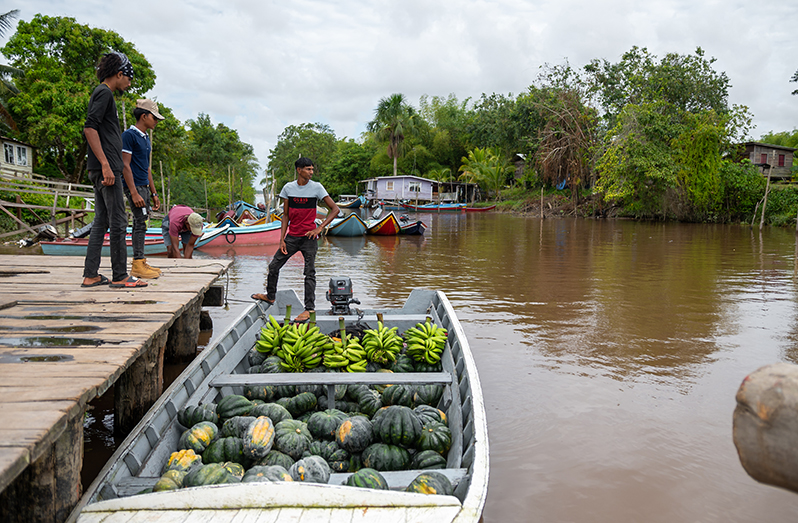Riverine life is all about farming
LAST week the Pepperpot Magazine visited two of the 365 islands in the Essequibo River to highlight the locals’ way of life.
The first island the team visited was Whitputush which is about a 20-minute boat drive from Fort Island with a 40 horsepower engine and boat.
At first glance, it seemed abandoned and uninhibited, but a closer look revealed a wooden cottage which staffers of the farm occupy. It is a coconut estate and a farm of fruits and other plants.
There is a small makeshift landing to moor boats and a rickety wooden landing is in place but it is steep and it takes you on to the shores of Whitputush Island.
On the outside, passing the island looks overrun with bushes but when you get there on the island it is well-cultivated into a coconut estate and fruit farm.
The island itself is about two miles long and it is a place that is often flooded whenever there is a spring tide. As such, the crops would perish.
The farm is maintained by workers from neighbouring islands in the Essequibo River and at times, the workers would spend a night or two overlooking the operations.
There is accommodation in a wooden cottage where they usually cook and sleep and there is also an outdoor shed the workers would use to shade and have lunch not far from the cottage.
On Whitputush Island, there is a cultivation of coconuts: 18 months, three and five years. Sweet figs, guava, plantains, soursop, cherries are also planted on a large scale.
The farmer in charge of the crops is Surendra Teehal, who is from Quarter Benabo, Essequibo Island. He works side by side with two other workers on the farm.
The 24-year-old told the Pepperpot Magazine that he has been working on the farm since its inception five years ago and he would plant the crops and ensure all is well on the island.
Teehal reported that a typical day for him starts early. He would leave home by 07:00 hours by boat to get to the farm to work with five other men.
He stated that, collectively, they would weed and do whatever is necessary to preserve the cultivation. They would try to leave the island by 16:00 hours daily and working on weekends was optional.
In addition, Teehal explained that he also rears some cows with his father on the island they reside, Quarter Benabo, also in the Essequibo River.
Growing up on an island leads to a simple way of life, Teehal said and he likes the simplicity it brings because there is enough space to do many things, but his hobby is playing cricket on the beach of any island for recreation.
He comes from a family of four brothers and a sister and they are from a generation of farmers who have lived their entire life on an island in the Essequibo River.
At a young age, they learned to cultivate crops, drive a boat, build boats with their father, rear cops and do other things necessary for a good life.
On the island he resides, Quarter Benabo, there are only a few neighbours. His immediate neighbour is his brother. His grandmother also lived nearby but she passed away a month ago.
His only sister got married and lives at Diamond, East Bank Demerara and she is the mother of a baby boy, and they would talk to her almost every day.
“Riverine life is hard, but you must be able to do more than one job to be successful in life because there are no permanent jobs around here, so it is only farming, fishing or rearing livestock and cattle,” he said.
On their island, they would have constant flooding during the spring tide, and they had to do a lot of sea defence, but they also need a sea dam and some internal drains on the island itself to prevent excess inundation.




.png)











